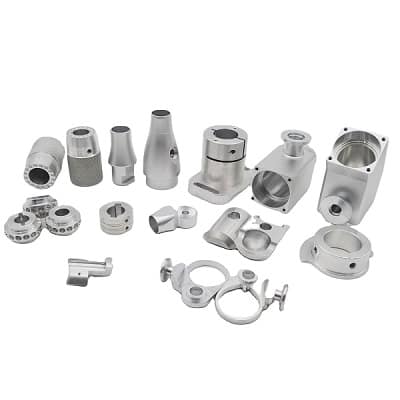Stainless steel has long been a staple in a variety of industries due to its strength, durability, and corrosion resistance. However, a common question that arises among engineers, manufacturers, and industrial professionals is: 不锈钢是否会生锈? While the answer might seem straightforward, the nuances behind this question are crucial to understanding how stainless steel fits into modern industrial applications.
In this article, we will explore the scientific aspects of stainless steel, the conditions under which it might rust, and the advantages of using stainless steel in industrial sectors. We will also provide a detailed explanation of why stainless steel is often the material of choice, especially in environments where durability and resistance to rust are essential.
Understanding Stainless Steel: The Basics
Before delving into whether stainless steel rusts, it’s important to understand what stainless steel is and why it has become the go-to material in numerous industrial applications.

Stainless steel is a type of steel alloy that contains a minimum of 10.5% chromium by mass. The chromium content creates a thin, passive film of chromium oxide on the surface of the steel, which protects it from further corrosion. This is the key feature that sets stainless steel apart from ordinary carbon steel, which is highly susceptible to rusting when exposed to moisture and oxygen.
However, despite its resistance to rust, does stainless steel rust under certain conditions? The short answer is yes, but only in specific circumstances.
Factors That Can Cause Stainless Steel to Rust
Stainless steel’s impressive corrosion resistance is not absolute. There are several factors that can lead to rusting or staining:
Chloride Exposure: One of the most common causes of stainless steel corrosion is exposure to chlorides. These are found in environments such as marine or coastal areas where saltwater is prevalent, or in cleaning products like bleach and some industrial chemicals. Under these conditions, the protective oxide layer on stainless steel can break down, allowing corrosion to occur.
High Temperature and Stress: At elevated temperatures, stainless steel’s corrosion resistance can be reduced. High stress, combined with high temperatures, can create localized areas of weakness where rust can form, especially in poorly designed or poorly maintained equipment.
Improper Maintenance: Regular cleaning and maintenance of stainless steel is essential. If stainless steel surfaces are not properly cleaned, dirt, debris, or chemical residues can compromise the integrity of the material’s protective layer, leading to rust formation.
Poor Quality Stainless Steel: Not all stainless steel alloys are created equal. Lower grades of stainless steel, especially those with inadequate chromium content, may be more susceptible to rusting. Industrial applications often require high-quality, corrosion-resistant grades of stainless steel, such as 304 or 316, which are engineered to withstand harsher conditions.
Does Stainless Steel Rust? The Answer and the Science Behind It
To answer the fundamental question: Does stainless steel rust? Yes, it can rust, but it’s less likely than other materials. The main reason stainless steel resists rusting is due to the formation of the chromium oxide layer. This layer is what makes stainless steel so valuable in industrial applications, especially those where durability and long-term performance are critical.
When stainless steel is exposed to harsh conditions, such as excessive chloride levels or extreme mechanical stress, the protective oxide film can be compromised. However, the rusting process is usually slower than with other metals, and it often manifests as a discoloration or pitting on the surface rather than full-scale rusting.
Passivation and Its Role in Preventing Rust
Passivation is a critical process that enhances the rust resistance of stainless steel. This process involves treating the steel with acid solutions to remove any free iron on the surface, which could potentially lead to rust. This treatment helps to ensure that the protective oxide layer remains intact for longer, significantly reducing the likelihood of corrosion in most industrial environments.
Industrial Applications of Stainless Steel: The Advantages
Given the potential for rust under specific conditions, why is stainless steel still widely used in industrial sectors? The answer lies in its numerous advantages, making it indispensable in a variety of industries.
Corrosion Resistance: The primary reason stainless steel is used in industrial applications is its exceptional resistance to corrosion. In environments where exposure to water, chemicals, or high humidity is common, stainless steel remains resilient and effective.
Strength and Durability: Stainless steel is strong, durable, and capable of withstanding extreme conditions, including high temperatures and mechanical stress. This makes it an ideal material for everything from structural components to machinery and equipment used in industries such as automotive, aerospace, food processing, and pharmaceuticals.
Hygienic Properties: Stainless steel is non-porous and easy to clean, making it a top choice in industries where hygiene is critical, such as food manufacturing, medical equipment, and pharmaceutical production.
Aesthetic Appeal: In addition to its practical applications, stainless steel is visually appealing, with a smooth and polished surface that maintains its appearance over time. This aesthetic appeal is valuable in industries such as architecture and interior design, where stainless steel is often used for decorative purposes.
Cost-Effectiveness: While stainless steel may have a higher initial cost compared to other metals, its longevity and resistance to corrosion make it more cost-effective in the long term. Reduced maintenance costs and the extended lifespan of stainless steel components provide excellent value for industrial applications.
The Future of Stainless Steel in Industry
The future of stainless steel in industrial applications looks bright. As industries continue to evolve, stainless steel’s ability to withstand harsh environments and maintain its performance is more valuable than ever.
Advances in Alloy Development: Scientists and engineers are continually developing new stainless steel alloys that enhance the material’s performance. For example, new corrosion-resistant grades are being designed to withstand even more extreme conditions, such as those found in offshore oil rigs or nuclear plants.
Sustainability: Stainless steel is highly recyclable, making it an environmentally friendly material choice. As industries seek to reduce their carbon footprints and adopt more sustainable practices, the demand for recyclable, long-lasting materials like stainless steel will continue to rise.
Emerging Industries: The increasing reliance on stainless steel in emerging sectors, such as renewable energy and electric vehicles, will expand its use. Stainless steel’s resistance to corrosion and strength make it ideal for applications in these rapidly growing industries.
Conclusion: Does Stainless Steel Rust? The Final Verdict
In conclusion, does stainless steel rust? The answer is yes, but under the right conditions, stainless steel remains one of the most durable and corrosion-resistant materials available. The likelihood of rust forming is low, especially when high-quality stainless steel alloys are used and when proper maintenance is performed.
The unique combination of strength, durability, corrosion resistance, and cost-effectiveness makes stainless steel an essential material in many industrial applications. As industries continue to innovate and evolve, stainless steel will remain a cornerstone of modern manufacturing, ensuring that it continues to play a key role in the future of industrial materials.
By understanding the nuances of stainless steel’s corrosion resistance and maintaining proper care, industrial professionals can leverage the full potential of this remarkable material for years to come.
